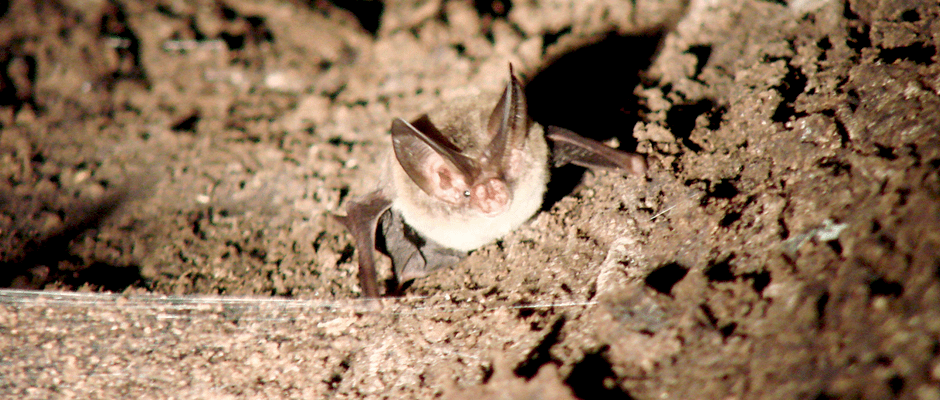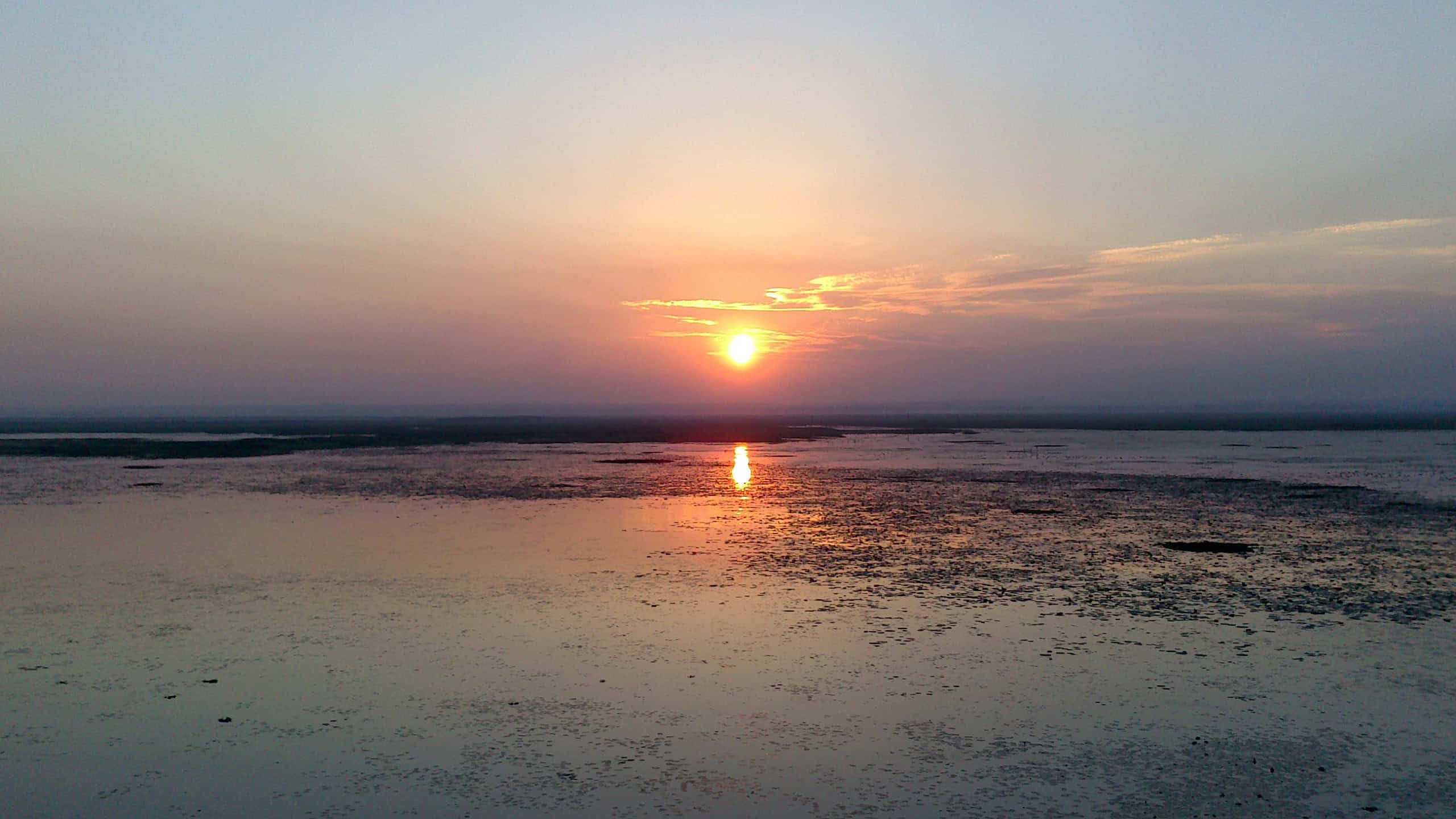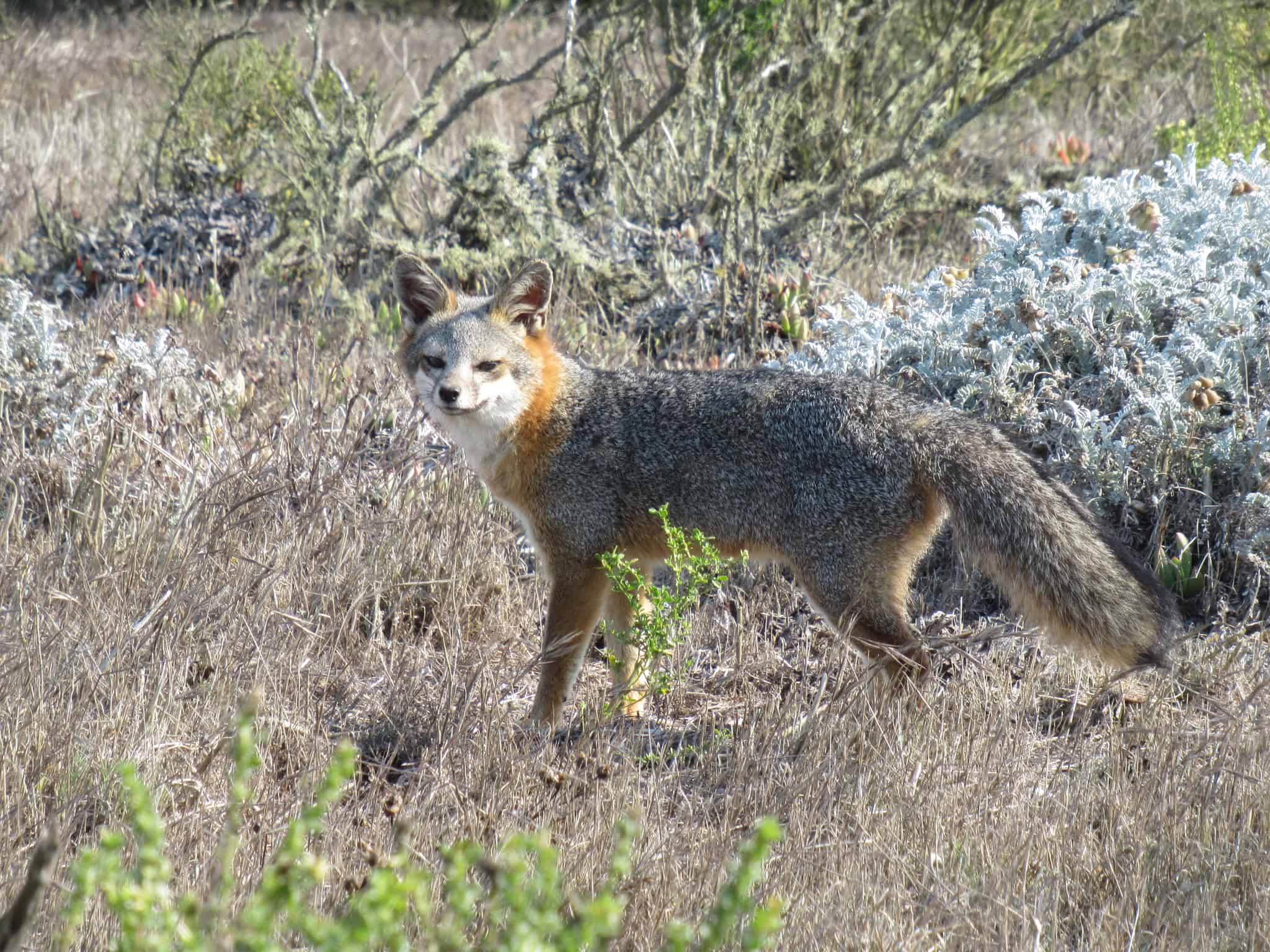Share this article
Rare bat species adapts to disturbed habitat
Two researchers at a time walked through the swampy waters of the bottomland hardwood forest in South Carolina on a mission to find a rare, sensitive bat species — the Rafinesque’s big-eared bat (Corynorhinus rafinesquii).
Amid the alligators and cottonmouths, the researchers had to make sure they didn’t get their feet stuck in swampy holes. “You don’t always know how deep that water is,” said TWS member Susan Loeb, a research ecologist with the Southern Research Station of the U.S. Forest Service and the author of a recent study on the rare bat species.
When the team of two approached trees with basal cavities, they used a light and a held a mirror up to the hole to determine if bats were present. In response to the light, the little critters would sometimes twitch their large ears, revealing themselves in the hole.
In a recent study published in the Journal of Mammalogy, Loeb looked at bat presence at three different sites with varying ranges of human disturbances due to logging and agriculture. The James W. Webb Wildlife Center and Management Area, which has been managed by the South Carolina Department of Natural Resources since 1941, hasn’t had any logging disturbance since then and was the least disturbed site. Loeb also looked at bats in the Department of Energy Savannah River Site, which went through extensive logging in the 1960s, ’80s and ’90s. Lastly, she looked at the Groton Plantation, which was logged multiple times in the 1940s, ’70s and ’80s.
The Rafinesque’s big-eared bat is considered a rare and sensitive species throughout the Southeast, and the U.S. Fish and Wildlife Service was conducting a status review to determine if it warranted listing. Then white-nose syndrome came along, threatening bat populations throughout the region, and dealing with the disease took over a lot of agency interest. “The status review has been put on the back burner for the time being,” Loeb said.
But Loeb said she was motivated to study the species, which is tied to the bottomland hardwood forest, a habitat that largely has been lost. Further, since the species is nonmigratory and doesn’t fly very far, its genetic diversity may be in peril since they can become isolated in one patch of habitat.
As part of the study, Loeb and her colleagues used GIS layers to draw transects perpendicular to the floodplain, slicing through a variety of habitats. Using GPS coordinates, the team went out onto the landscape to lay out the transects and looked for any tree with a basal cavity within 25 meters of each line. In all three areas, researchers found the bats were selecting the largest trees available with the largest cavities.
Scientists don’t know yet why the bats choose larger trees although they do have some hypotheses. Larger tree cavities may simply offer them more space, or more stable temperatures, or they may help the bats evade predators.
At, the Webb Wildlife Center and Management Area, the least disturbed site, the bats chose very large trees. At the two more disturbed sites, however, while they selected the largest trees available, those trees were much smaller trees.
“This suggests they are adapting to this disturbance by using smaller trees” she said. “The question is how far can they adapt? At what point, is there just too much disturbance and trees just get too small and the population is no longer viable?”
Loeb said it’s important to conserve these bottomland hardwood forests, particularly trees with cavities, and ensure corridors connect the patches of hardwood forest since the bats don’t fly far. The South Carolina DNR has put up about 10-foot-tall concrete structures with cavities. “In areas that mat have a small amount of bottomland hardwood forests or few large cavity trees, artificial cavities could help to supplement the trees out there,” she said. “This could also help in terms of making sure bats are not isolated.”
Header Image: A Rafinesque’s big-eared bat appears in a tree cavity. ©Charles Dachelet, USFS








